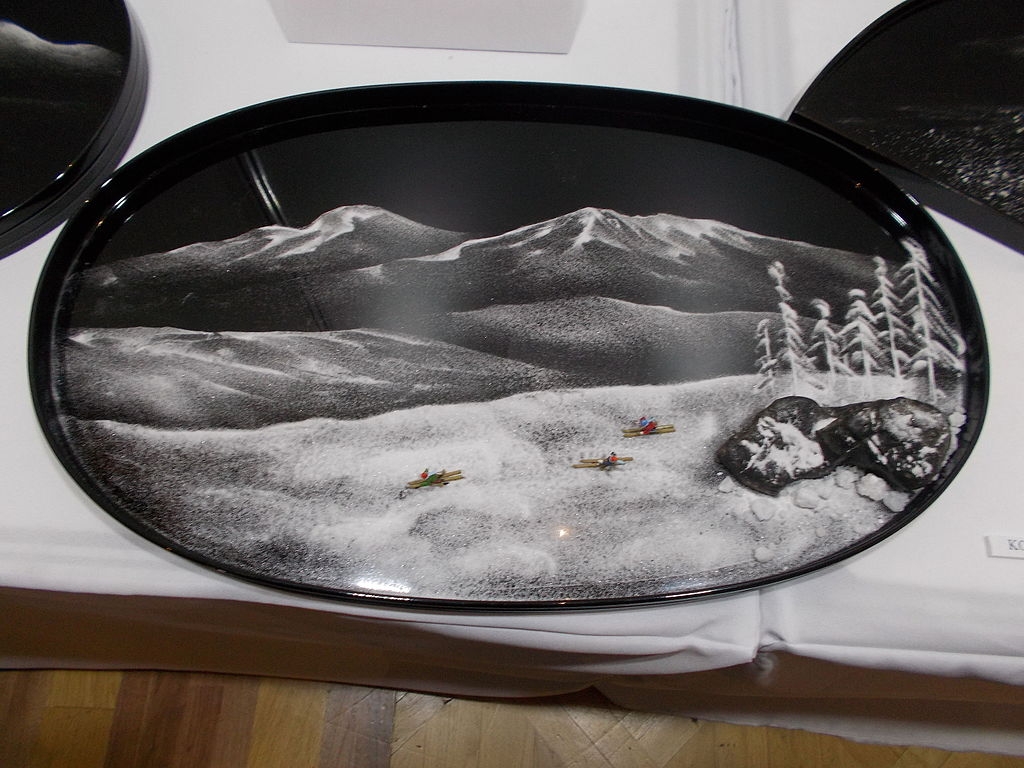Bonseki

Bonseki, literally meaning tray rocks, is a Japanese art form of creating scenery with the use of black lacquer, white sand, pebbles, and small rocks. Feathers, small flax brooms, sifters, spoons, wood wedges, and small delicate tools of the like are used to depict scenes of mountains, seashores, islands, and gardens.
The art is said to have been used by the 40th emperor of Japan, Emperor Temu, to describe landscapes and natural objects. It became a popular art form of the Japanese nobility during the Muromachi period of Japan. The art flourished even more in the Edo period. The goal of the art form is to develop a peaceful feeling of satisfaction as you create the bonseki scene. Modern expressions of bonseki are found in sand art.
Photo by Globetrotter19. Licensed under Creative Commons. (https://creativecommons.org/licenses/by-sa/3.0/deed.en)
Tags: tradition, Bonseki, tray rocks, Japanese art form, Emperor Temu, Muromachi period, Edo period, peace, sand art
June 28, 2022
April 29, 2022
April 12, 2022
March 24, 2022
March 17, 2022
March 11, 2022
February 11, 2022
January 21, 2022
Signup
- Sign Up
- Already a member? Login Now!
